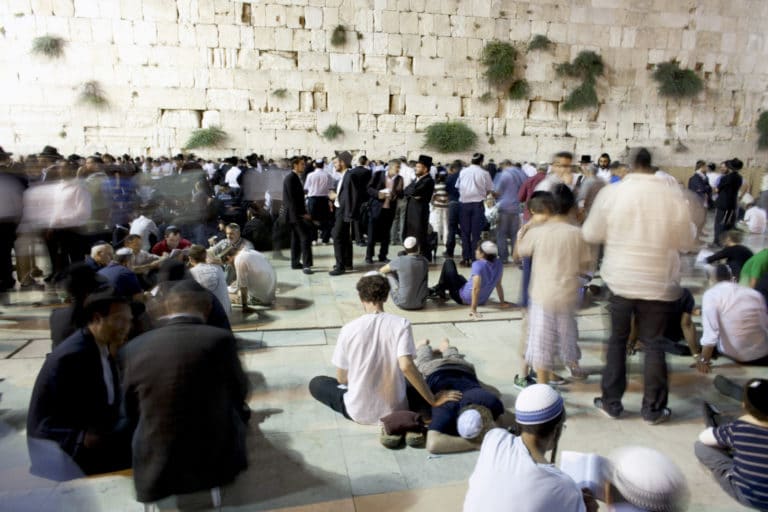
“My eyes are spent with tears, my heart burns, my being melts away over the ruin of my poor people.” These words from Eicha (the Book of Lamentations) are read every year by observant Jews on Tisha B’Av (the 9th of the Hebrew month of Av). Many also recite the traditional Nahem (“comfort us”) prayer which refers to Jerusalem as “the city that is in ruins, despised and desolate, mourning without her children.”
In an age when a modern state of Israel exists — and especially following the reunification of Jerusalem under Israeli sovereignty in 1967 — these statements don’t seem to reflect reality. Almost half of the world’s Jews now live in their ancient homeland and have sovereignty over their holiest city. So why do many Jews continue to say these prayers, and continue to fast and mourn on the 9th of Av?
Read more: Get our guides to all the Jewish holidays.
When is Tisha B’Av 2024?
Tisha B’Av starts the evening of Monday, Aug. 12, 2024, and ends in the evening of Tuesday, Aug. 13, 2024, corresponding to the 9th of the Hebrew month Av.
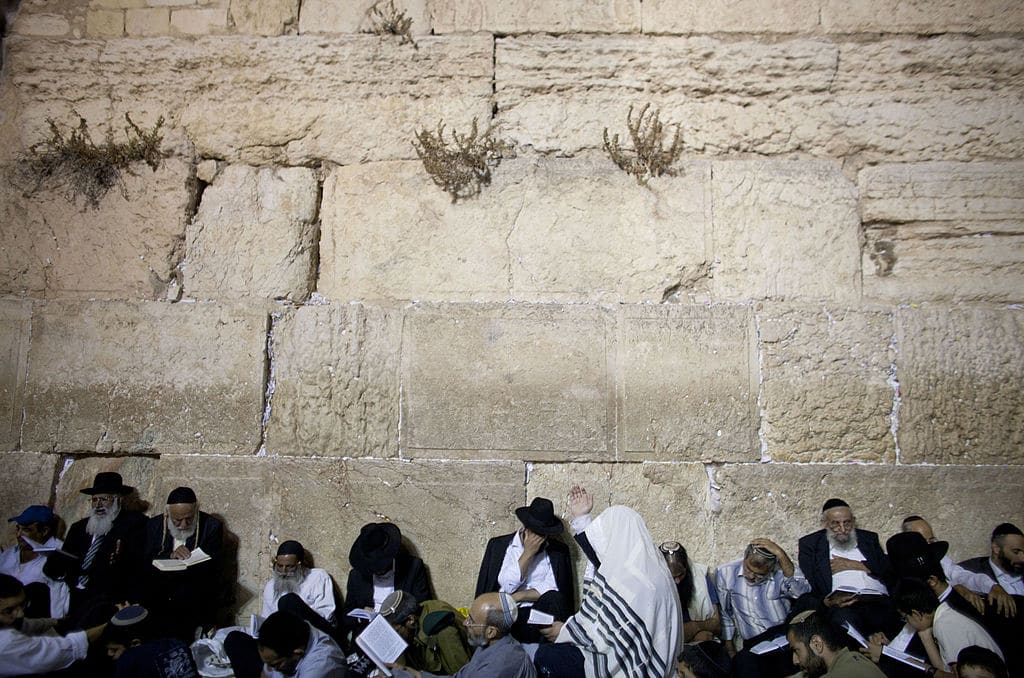
The 9th of Av: A day of Jewish disasters
To answer that question, you need to understand how the 9th of Av became a day of mourning. The short version is that this was a “terrible, horrible, no good, very bad day” for the Jews. According to Mishna Taanit 4:6, this pattern actually began in Biblical times. On the 9th of Av, the generation of Israelites leaving Egypt learned that they would all die in the wilderness and would not be able to enter the promised land. In 586 B.C.E., it was the day that the First Temple (that King Solomon built) was destroyed by Nebuchadnezzar, the king of Babylonia. And in 70 C.E., it was when the Second Temple — which had been built by the returning exiles and rebuilt by King Herod — was destroyed by the Romans.
In post-Temple times, the day continued to prove inauspicious for the Jewish people. On the 9th of Av in 135 C.E., Betar, the last fortress of Shimon Bar Kochba and his Jewish army, fell to the Romans. One year later, Hadrian, the Roman emperor and ruler of Jerusalem, plowed the area where the Temple had stood and established his own pagan temple. King Edward I of England signed the Edict of the Expulsion of the Jews from his country on the day in 1290, and King Ferdinand and Queen Isabella decreed that the expulsion of the Jews from Spain would take place on this date in 1492.
Based on the Talmudic idea of “huchpilu bo hatzarot” — meaning, “all tragedies that befall the Jewish people should be subsumed under the tragedy of the destruction of the two Temples” — the rabbis designated the 9th of Av as the day that Jews would remember all of these distressing events. “When the month of Av enters, one should decrease in joy,” Mishna Taanit 4:6 says. In addition to fasting, traditionally observant Jews engage in heshbon hanefesh (literally, “an accounting of the soul”) with a special focus on lessons that we as a Jewish community could learn from our past.
The story of Kamtza and Bar Kamtza
Some of the well-known lessons that the Jewish people have typically reflected on at this time are found in the Talmudic story of Kamtza and Bar Kamtza (in Gittin 55b). This famous tale is widely associated with Tisha B’Av because of its opening statement: “Jerusalem was destroyed on account of Kamtza and Bar Kamtza.”
Here is the story: An invitation to a party is mistakenly delivered to Bar Kamtza instead of the intended recipient, Kamtza. Bar Kamtza (who is an “enemy” of the host) shows up at the party. The host declares in front of all of the other guests — including many sages — that Bar Kamtza is his enemy. Then, the host callously escorts Bar Kamtza to the door. Bar Kamtza is so humiliated and offended that he goes to the Roman king and accuses the Jews of rebelling against the Roman authorities, leading to the destruction of the Temple.
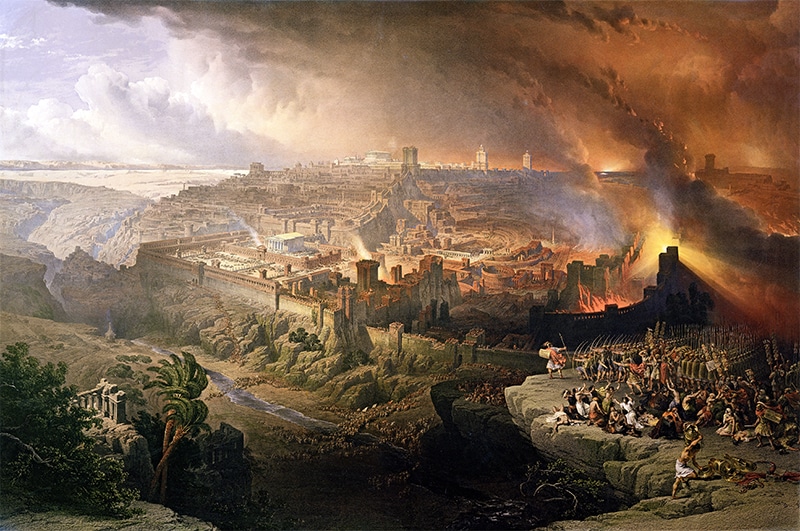
The 16th-century rabbi Judah Loew ben Bezalel (also known as the Maharal of Prague), argued that this story is a warning about the dangers of sinat hinam (baseless hatred). He wrote that the problematic dynamics between Kamtza, Bar Kamtza and the host were representative of divisiveness and enmity present in the entire Jewish community at the time. The Maharal’s basic argument is stated pointedly in the Talmud (Yoma 9b): “Why was the Second Temple destroyed? Due to baseless hatred.”
The story of Kamtza and Bar Kamtza also has a powerful message about the responsibilities of rabbis and Jewish leaders. Dr. Noam Weissman wrote, “The most painful aspect of the Kamtza-Bar Kamtza battle was not the antipathy that was displayed for the other. Rather, it was the esteemed rabbis who stood idly by while their brother was being humiliated.”
What is sinat hinam?
On the surface, the phrase “baseless hatred” implies that there are different types of hatred, some rooted in a cause and others “baseless.” So which ones are considered sinat hinam?
According to Rabbi Binyamin Zimmerman, director of HESBER, a Jewish educational organization, sinat hinam is hatred that arises from jealousy or arrogance, or when substantive disagreements grow to become personal and uncivil. Many also include racism, antisemitism and other forms of discrimination as expressions of sinat hinam. Jewish tradition distinguishes sinat hinam from some permitted forms of hatred, such as the need to distance oneself from a harmful influence. Even so, these instances of “permitted hatred” are intended to be severely limited.
The medieval Spanish rabbi Bachya Ben Asher warned that baseless hatred “is a grave sickness and is the cause of all the sins mentioned in the Torah.” He urged achdut Yisrael (unity among Jews), adding that “unity is the essential cause of peace.” Similarly, Rabbi Abraham Isaac Kook (more commonly known as Rav Kook) wrote, “If we were destroyed and the world with us due to sinat hinam, then we shall rebuild ourselves and the world with ahavat hinam (baseless love).
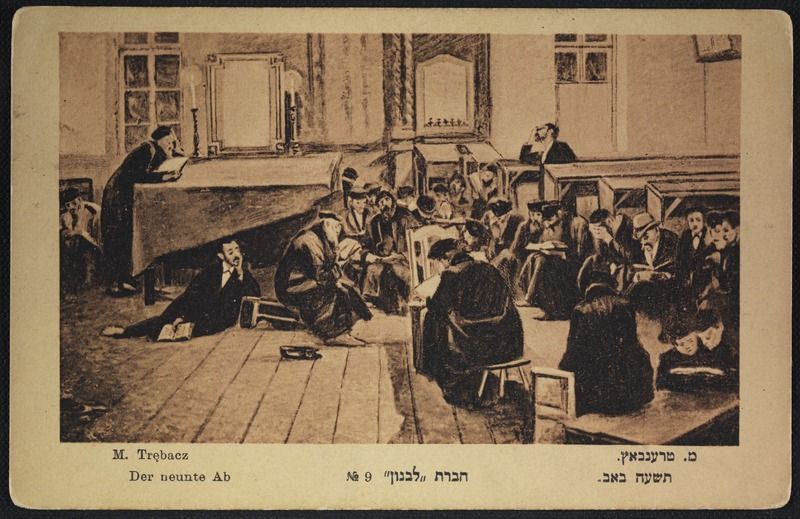
The debate over fasting and the Nahem prayer
The story of Kamtza and Bar Kamtza raises the question of what we are truly mourning on this somber day. Are we mourning the loss of the Temple, or is this really about the cause of the loss of the Temple and the problem of sinat chinam? And at what point will fasting and other mourning practices on Tisha B’Av no longer be necessary?
Halakhic authorities have debated the question of at what point it will no longer be appropriate to mourn on this day. The famous commentator Rashi minimally defined the requirement as the removal of non-Jewish rule over the Jewish people. But Rashi was in the minority here. The majority of the Rishonim (leading rabbis who lived between the 11th and 15th centuries) agreed that the Temple would need to be rebuilt before Tisha B’Av would stop being a sad day.
While the Orthodox community and the rabbinate argue that fasting will continue to be necessary until the rebuilding of the Temple, there are differences of opinion regarding the Nahem prayer (recited by Ashkenazi Jews at the afternoon service and by Sephardic Jews at all of the services on Tisha B’Av). The traditional version of the prayer describes Jerusalem as “the city that is in ruins, despised and desolate, mourning without her children.”
The late rabbi Hayyim David HaLevi, the former Sephardic Chief Rabbi of Tel Aviv, believed that describing Jerusalem this way would constitute a lie when he considered the city to be thriving, with hundreds of thousands of Jews living there. HaLevi was also in favor of reducing the sorrowful kinot (elegies) that are traditionally recited. Since 1967, various attempts have been made to create new versions of the Nahem prayer to better reflect the current reality. The Orthodox Movement has not accepted these changes, believing them to be inappropriate so long as the Temple remains destroyed and opposing liturgical modifications in general.
Outside of the Orthodox world, Israel’s Masorti Movement is divided over the issue of fasting.
Some, like Rabbi Tuvia Friedman, argue that one should fast for half the day in light of the reunification of Jerusalem. Others believe that fasting for a full day is still necessary because of the ongoing conflict in Israel. Rabbi David Golinkin, president of the Schechter Institute, made this case: “We have a State, but have we enjoyed one moment of real peace since its establishment? We have fought seven wars in the course of 62 years and we continue to fight terrorists in Israel, Gaza and Lebanon.” With the recent wave of antisemitism sweeping across America and the world, the Jewish people are certainly not free from persecution and troubles. From these perspectives, Tisha B’Av ought to remain a day of mourning.
Meanwhile, the non-Orthodox movements altered the text of the Nachem prayer to be a plea for Rachem (compassion) for Jerusalem, “which is being rebuilt upon its ruins, restored upon its ravage, and resettled upon its desolation.”
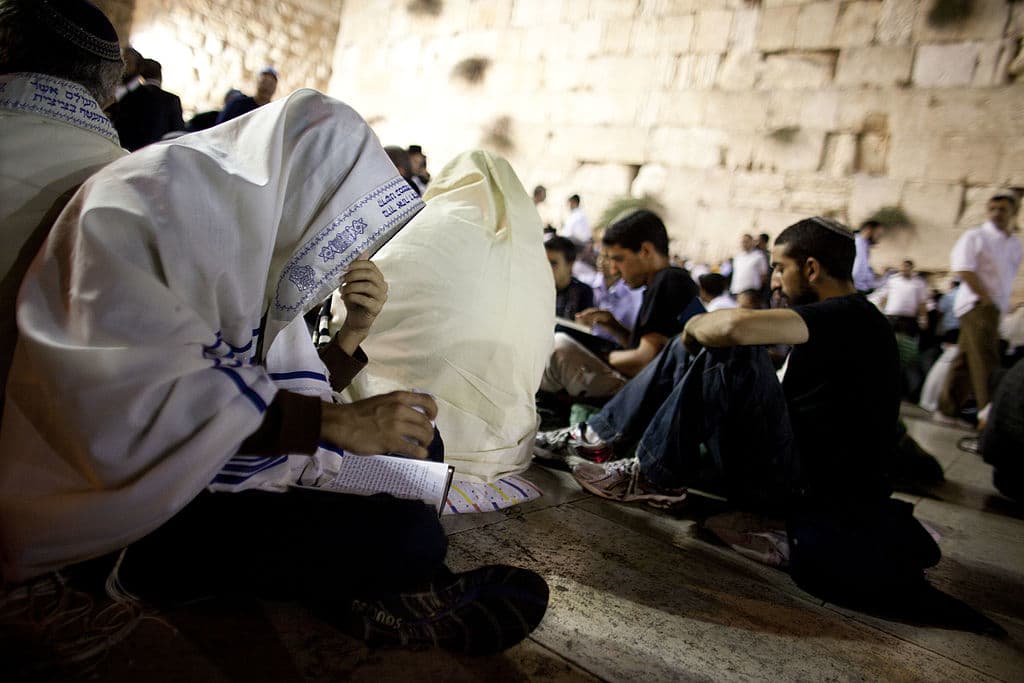
The bottom line
We should all count our blessings that Jerusalem is not desolate and abandoned (as traditional Tisha B’Av liturgy describes) and be thankful that there is a modern state of Israel with Jewish sovereignty. Regardless of one’s politics, the Jewish people having access to our holiest sites and autonomy in the holiest city is a sui generis feat.
However, this does not render Tisha B’Av and its traditional mourning practices obsolete. In addition to remembering the destruction of the two Temples — and other tragedies that have befallen the Jewish people — many Jews continue to commemorate this day in recognition of the fact that Israel is not yet at peace, that Jews around the world continue to face antisemitism, and that sinat hinam and division persist within the Jewish community.
As we enter the saddest day in the Jewish calendar, will the Kamtza-Bar Kamtza battle finally get resolved? Will we sit idly by, or will we bring people together? Will we use the power of our words for good? It’s our choice. Until we can find ways to achieve greater unity and ahavat hinam among the Jewish people, many will continue to mourn, search deeply inside ourselves and commemorate Tisha B’Av as the saddest of days.
Originally Published Jul 15, 2021 01:35PM EDT
